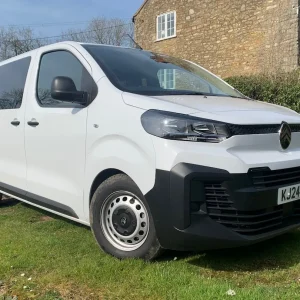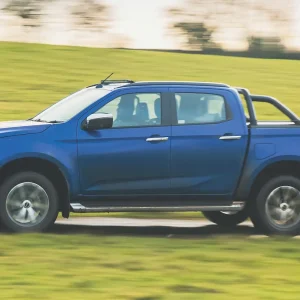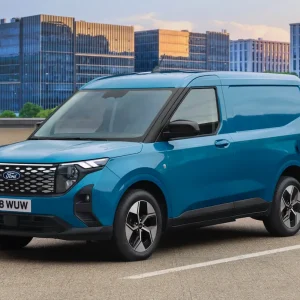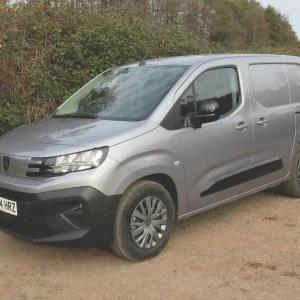What we’re talking about is something that’s been happening in the car business for several years now; manufacturers producing products cunningly tailored to fill every potential niche. So you’d like something that’s got a bigger load area than a 207 Van, but smaller than a Partner? No problem, says Peugeot, we’ll flog you a Bipper.
Want something that’s bigger than a Berlingo, but smaller than a Relay? Easy-peasy, says Citroën, we’ll flog you a Dispatch, and because there’s now so much variety in the Dispatch range we’re confident that we can find you one that precisely suits your needs.
Front-wheel drive, the Caddy Maxi slots in between the aforementioned standard Caddy and the lower reaches of the Transporter range. Its biggest rival in the UK is without doubt Ford’s Transit Connect. Any van that represents a challenge to the Big Blue Oval on its home turf — in Britain Ford is light commercial vehicle market leader by a country mile — has to be worth thorough investigation. So we decided to check it out.
Technical
British buyers get to choose between two TDI diesels; a 2.0-litre with 140hp on tap and complete with a six-speed manual gearbox or a 1.9-litre generating 104hp and supplied with a five-speeder.
We opted for the smaller of the two engines, but married to VW’s superb six-speed DSG semi-automatic gearbox as an extra-cost option. At present DSG is not available in conjunction with the 2.0-litre, but could be in the future.
Go for the semi-auto ‘box and VW throws in a particulate trap. It comes as standard with the 2.0-litre.
While almost all modern diesel vans feature common rail fuel injection, VW has stuck with unit injectors for Caddy instead. A four-cylinder lump with a variable geometry turbocharger and an intercooler, the 1.9-litre produces maximum power at 4,000rpm, while peak torque of 250Nm kicks in at 1,900rpm.
The front suspension employs McPherson struts while a rigid axle with single-leaf springs helps support the rear. Anti-roll bars are fitted front and back. Our Caddy Maxi sat on six-spoke alloy wheels — £360, and all prices quoted here exclude VAT — shod with Firestone F590 195/65 R15 tyres.
ABS and disc brakes come as standard along with Engine Braking Control, Electronic Brakeforce Distribution and Traction Control System. Hydraulic power steering is a standard feature too and offers a 12.2m wall-to-wall turning circle.
Grossing at 2,350kg, our Maxi could handle a 794kg gross payload — 6kg less than the manual version — and tow a braked trailer grossing at 1,500kg.
Load Area
 Access to the 4.2m3 cargo bay is via a sliding door on each side plus asymmetric rear doors with the narrower of the two on the offside. Both can be swung through 170° if the stays are released.
Access to the 4.2m3 cargo bay is via a sliding door on each side plus asymmetric rear doors with the narrower of the two on the offside. Both can be swung through 170° if the stays are released.
Eight load tie-down points are provided and the doors are panelled with hardboard to half their height. There’s some panelling above the wheelboxes too, but there’s nothing else to protect the cargo bay, including the floor, from scratches and scrapes, so you may want to put some cash aside to pay for it to be timbered out.
Good to see a solid, full-height, bulkhead, but it’s plastic rather than steel and is angled backwards into the load area — particularly the section behind the driver — and steals some space.
Maximum load length is 2,250mm; 469mm more than the standard Caddy. Maximum width is 1,558mm, narrowing to 1,170mm between the wheelboxes, while maximum height is 1,257mm. Rear loading height is 594mm. The rear door aperture is 1,181mm wide and 1,116mm high. Dimensions for the side door aperture are 700mm and 1,108mm respectively.
Cab Comfort
 VW’s interior designers were clearly not at their best when they came up with the styling for Maxi’s dashboard. It looks uninspired; and that’s putting it kindly. What’s more — and call us old-fashioned if you like — we’re not that keen on open-fronted, lid-less gloveboxes, even though the security a lockable glovebox lid provides is doubtless illusory.
VW’s interior designers were clearly not at their best when they came up with the styling for Maxi’s dashboard. It looks uninspired; and that’s putting it kindly. What’s more — and call us old-fashioned if you like — we’re not that keen on open-fronted, lid-less gloveboxes, even though the security a lockable glovebox lid provides is doubtless illusory.
Other stowage facilities include a deep, full-width, shelf above the windscreen, a bin in each door with a moulding to accommodate a flask or a 1.5-litre bottle of water, two cup-holders between the seats and two more to the rear of the handbrake lever. In addition there’s a tray for small change next to the lever and a cubby-hole at the bottom of the dashboard, not to mention trays on top.
We’ve no quarrel whatsoever with the driving position. There’s plenty of head, leg and shoulder room, and both the steering wheel and the seat are height-adjustable. The height of the latter is especially easy to alter thanks to a nice, big lever, and the passenger seat can be adjusted for height too if you specify the £215 cab comfort pack. It includes a concealed compartment beneath the seat and a covered dash-top tray, not to mention carpet for the cab floor and vanity mirrors. There’s also a concealed compartment under the driver’s seat.
Our Maxi came complete with a driver’s airbag, a 12-volt power point, an RDS radio/CD player, electric windows and electrically heated and adjustable exterior mirrors in a £255 pack, and semi-automatic Climatic air-conditioning for a further £725.
Remote central locking is standard — it allows you to lock and unlock the rear doors separately from the cab doors should you wish to do so — and includes deadlocks, and the doors can also be locked by hitting a button on the driver’s door. Unfortunately it’s way too small to be easily seen in an emergency. What VW should fit instead is a great big button smack in the centre of the facia. For preference it should be next to the prominently positioned button that triggers the hazard warning lights.
On the Road
Ensuring power is delivered smoothly and with the minimum of fuss, the marriage of the 1.9-litre engine with the excellent DSG ‘box is a match made in heaven. It ensures that the performance that’s on tap can be exploited to the full; not just around town — where DSG is in its element — but on the motorway too.
While the 1.9-litre doesn’t pack quite the same punch as its 2.0-litre stablemate it’s fine for stop/start urban and suburban runs, and for lightly laden rural and intercity treks too. If you’re proposing to lug heavy loads over long distances, however, then you may find that the bigger engine is a better bet. That’s always assuming that you’re willing to put up with the fact that, for the moment, you cannot have it with DSG.
Solidly built, and with nary a squeak or rattle, Maxi rides well and is highly manoeuvrable at low speeds. At higher speeds, however, the steering fails to tighten up sufficiently, making the handling slightly nervous at times. It almost feels as though it’s got electric power assistance although, as we pointed out earlier, the power steering system is hydraulic.
Nor were we entirely happy with the noise suppression. Wind noise is a touch excessive and the droning from the tyres can become irritating after a while.
As far as fuel economy is concerned, we averaged a respectable 42mpg.
While nobody will ever pretend that Maxi’s exterior styling is exciting and innovative, there’s no denying that it looks good finished in metallic silver (£295) and with colour-coded door handles, mirror casings and bumpers for another £180. The paintwork is protected by side rubbing strips against minor damage.
Maxi comes with a three year/100,000 mile warranty with no mileage limit in the first two years and including emergency roadside assistance for the full duration, a 12 year anti-corrosion perforation warranty for the body and a three year paintwork warranty. Service intervals are set at a maximum 18,000 miles.
Flip open the bonnet and you’ll discover to your delight that it supports itself with a gas-filled strut. No need to fiddle about with bonnet props. Access to the dipstick, oil top-up point and screen-wash reservoir is easy, so there’s no excuse for failing to carry out regular checks.
Caddy Maxi falls into insurance group 4A. No CO2 figures are quoted for this particular model, but the window van version emits 185g/km.
VERDICT
Bigger than a high-cube like Renault’s Kangoo, but smaller than a full-size panel van, Volkswagen’s Caddy Maxi is just about the right size for a significant number of light commercial operators. No matter whether you pick the 1.9-litre or the 2.0-litre it comes with an excellent diesel engine, and the DSG gearbox is one of the best we’ve ever encountered. The good news doesn’t stop there. Maxi is solidly built, it’s manoeuvrable and it rides well too. Drawbacks include unexciting styling both internally and externally, excessive noise and handling that is spoilt by over-assisted steering. But if you can live with those drawbacks, and particularly if you’re looking for an alternative to the long-wheelbase Ford Transit Connect, then go check it out — and if it’s the 1.9-litre you’re interested in, pay a bit more and treat yourself to the DSG ‘box. You won’t be disappointed.

 Naming your shiny new van after a long-gone British Leyland car may not be the smartest marketing move in the world, but fortunately for Volkswagen the Caddy Maxi has a lot more going for it than its badge. As its title suggests, it's the Caddy high cube van's big brother, and it's an example of a major trend that's rapidly engulfing the light commercial business.
Naming your shiny new van after a long-gone British Leyland car may not be the smartest marketing move in the world, but fortunately for Volkswagen the Caddy Maxi has a lot more going for it than its badge. As its title suggests, it's the Caddy high cube van's big brother, and it's an example of a major trend that's rapidly engulfing the light commercial business.



